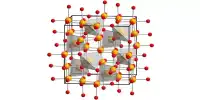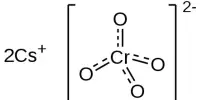A system for controlling the shape of molecules can open up new fields of chemistry, including applications in computer use in pharmaceuticals. The authors describe it as the first new method of molecular reconstruction reported since 1961. Although some atoms can only be held together, others have multiple isomers, the same formula being made in different shapes.
The chemical and biological properties of two isomers can be very different – some drugs are effective in only one isomer, for example, and quality control is needed to make sure the product is in the correct form. Nature Chemistry has announced a new way to control the formation of specific molecules, including the production of molecules that can alter isomers in a controlled way.
Until now the process has been limited to common molecules but the authors consider their work as policy proof with important technological possibilities. The transformation is so new; the naming of the recognized chemistry on paper notes cannot describe it. Constitutional isomers have atoms or functional groups with fundamentally different bonds. The individuals described in this study belong to the class of stereoisomers, where the bonds are the same but the geometric position, for example, changes the angle between the atoms.
Peter Canfield, a PhD student at the University of Sydney and first author, told IFLScience that the team confined boron-oxygen-boron molecules inside paraffin, a type of molecular scaffold used to transport molecules. Canfield said, porphyrin “anchors boron atoms so that they can pass through flexible motions, without distracting external processes as would happen in other environments.” The bonds act like a wrist, changing the angle of the oxygen-related boron atom.
The result, Canfield explained, is a switch that can be easily adjusted between states by temperature. The computer memory mentioned in Canfield depends on the existence of switches that can easily be changed from one to zero. An array of switching molecules within the isomer state can provide extremely dense non-volatile memory storage. Canfield noted that paraffin, which contains oxygen-carrying hemoglobin in the blood and plant chlorophyll, is ubiquitous in nature, providing ready-made stock if we want to make bioactive products.
The discovery was made after the authors considered variations in molecular size that should be geometrically possible. Professor Jeffrey Reimers of the University of Technology Sydney said in a statement, “When we looked at it, we noticed a basic form that had never been created before.”
The researchers then set out to find ways to create this form, finally spectroscopically confirming that they not only created it but could keep it stable at room temperature. Other chemicals have been found to temporarily create similar isomers, but changing the scale to nanoseconds invalidates practical applications.















